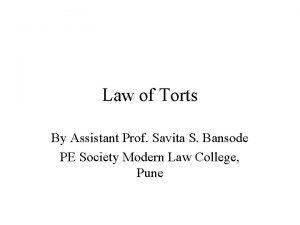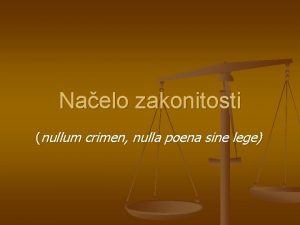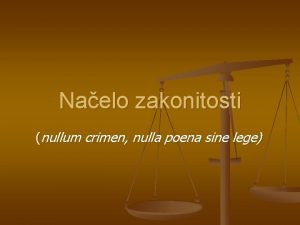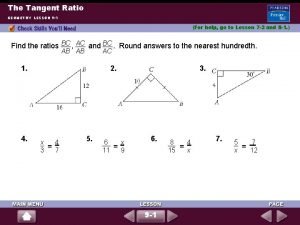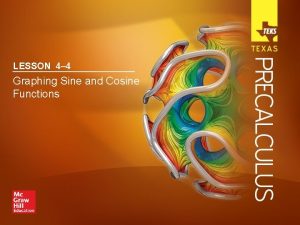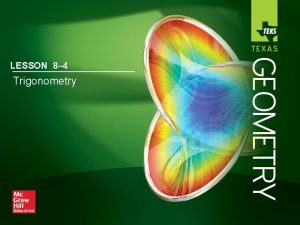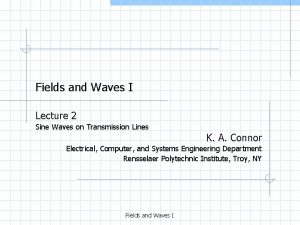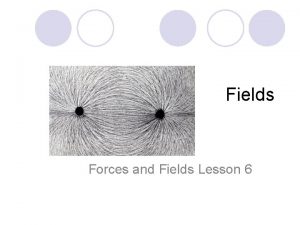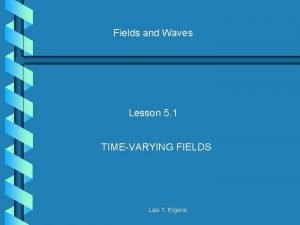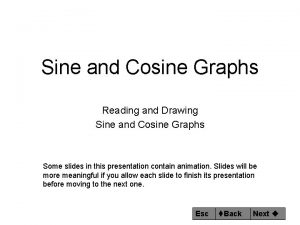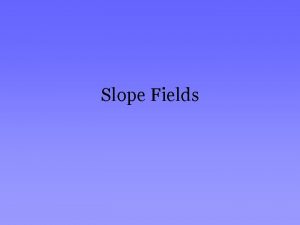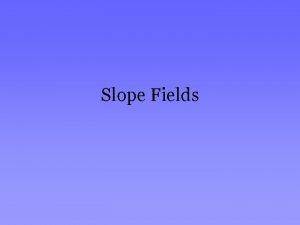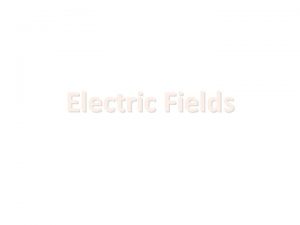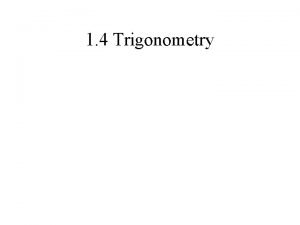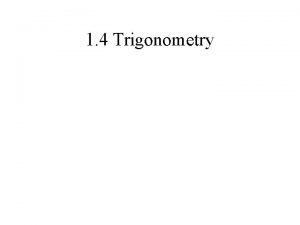Fields and Waves Lesson 1 2 SINE WAVES













- Slides: 13

Fields and Waves Lesson 1. 2 SINE WAVES ON TRANSMISSION LINES Darryl Michael/GE CRD

Standing Wave Patterns Today’s Class: • look at effects of Sine Waves on Transmission Lines • generate Standing Wave Patterns - predict these • when load is mismatched • waves sent down the line are reflected • incident and reflected waves interfere constructively and destructively • standing wave occurs

Transmission Lines Incident Wave Mismatched load Reflected Wave Standing wave due to interference Do Experiment 1 a, b and c

Transmission Lines - Standing Wave Derivation Phasor Form of the Wave Equation: where: General Solution:

Transmission Lines - Standing Wave Derivation Backward Wave Forward Wave TIME DOMAIN Vmax occurs when Forward and Backward Waves are in Phase CONSTRUCTIVE INTERFERENCE Vmin occurs when Forward and Backward Waves are out of Phase DESTRUCTIVE INTERFERENCE Do Problem 1 a

Transmission Lines - Standing Wave Derivation Distance between Max and Min is l/2 Assume Show this , are real for the moment (will be complex if load is complex Forward Phase is = Backward Phase is = Difference in Phase is = Varies by 2 p (distance between maxima)

Reflection Coefficient Derivation Define the Reflection Coefficient: Maximum Amplitude when in Phase: Similarly: Standing Wave Ratio (SWR) =

Reflection Coefficient Derivation Let z=0 at the LOAD Need a relationship between current and voltage:

Reflection Coefficient Derivation

Reflection Coefficient Derivation At LOAD: Use derived terms of V and I at z=0 (position of the LOAD) Note that OR

Standing Wave Pattern Do Problem 1 a - 1 c From experiment 1 b, Maximum occurs at LOAD for Minimum occurs at LOAD for In general, Max at LOAD Min at LOAD IF ZL is REAL

Standing Wave Pattern Do Experiment 2 What does , look like? When ZL is complex, so is GL Define: if z =0 at LOAD

Standing Wave Pattern If z=L at LOAD and z=0 at SOURCE, When Phase = p, FIRST MINIMUM occurs Other MINs are displaced by l/2
 Red fields
Red fields Scrap heap magnet diagram
Scrap heap magnet diagram Injuria sine damno and damnum sine injuria difference
Injuria sine damno and damnum sine injuria difference Nullum crimen sine lege nulla poena sine lege
Nullum crimen sine lege nulla poena sine lege Nullum crimen sine lege nulla poena sine lege
Nullum crimen sine lege nulla poena sine lege Compare and contrast p waves and s waves using venn diagram
Compare and contrast p waves and s waves using venn diagram Practice 9-1 the tangent ratio answers
Practice 9-1 the tangent ratio answers Sinusoids lesson 4-4
Sinusoids lesson 4-4 8-4 trigonometry answer key
8-4 trigonometry answer key Similarities of mechanical waves and electromagnetic waves
Similarities of mechanical waves and electromagnetic waves Examples of mechanical wave
Examples of mechanical wave Similarities of mechanical and electromagnetic waves
Similarities of mechanical and electromagnetic waves Long waves and short waves
Long waves and short waves Mechanical waves and electromagnetic waves similarities
Mechanical waves and electromagnetic waves similarities


